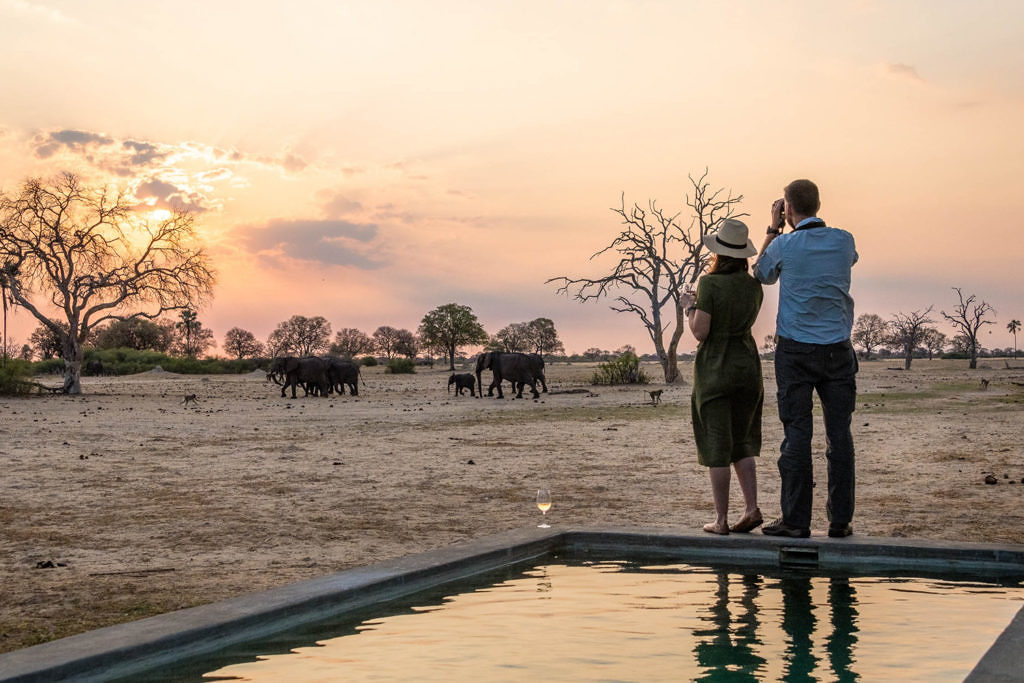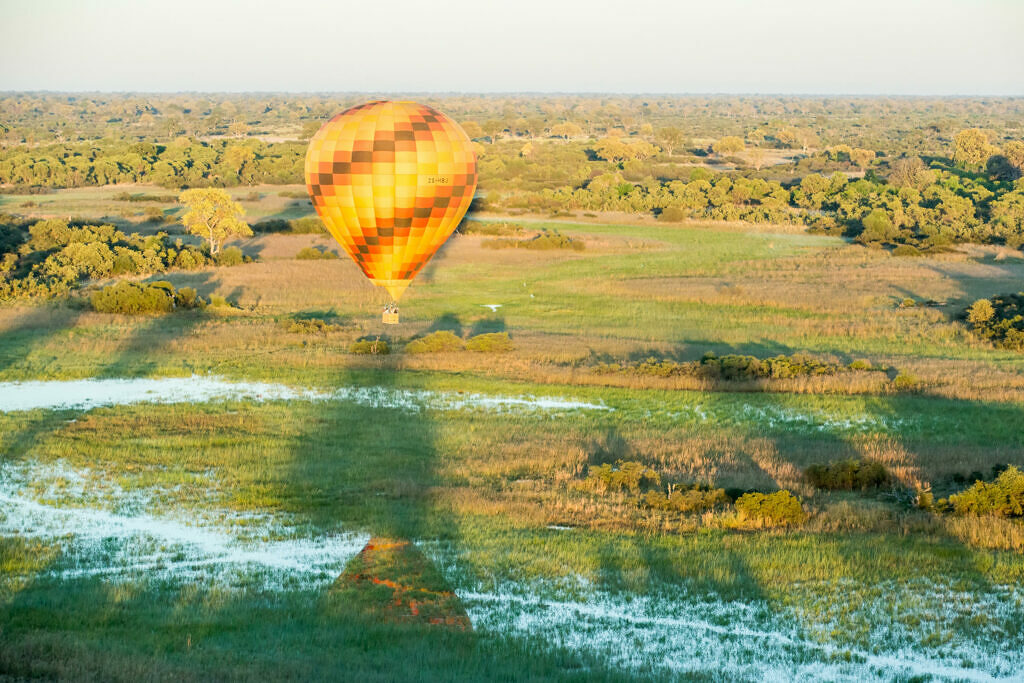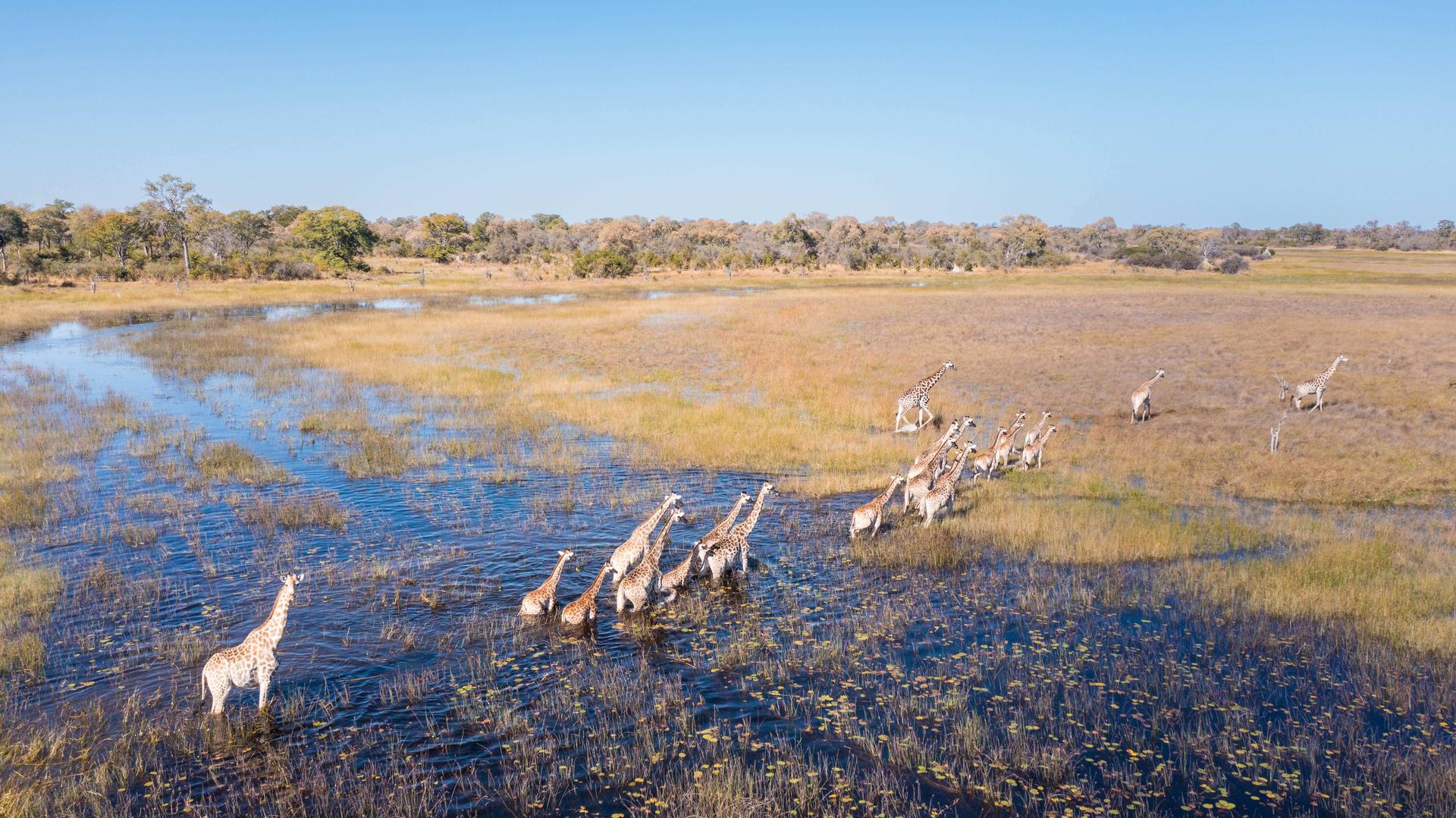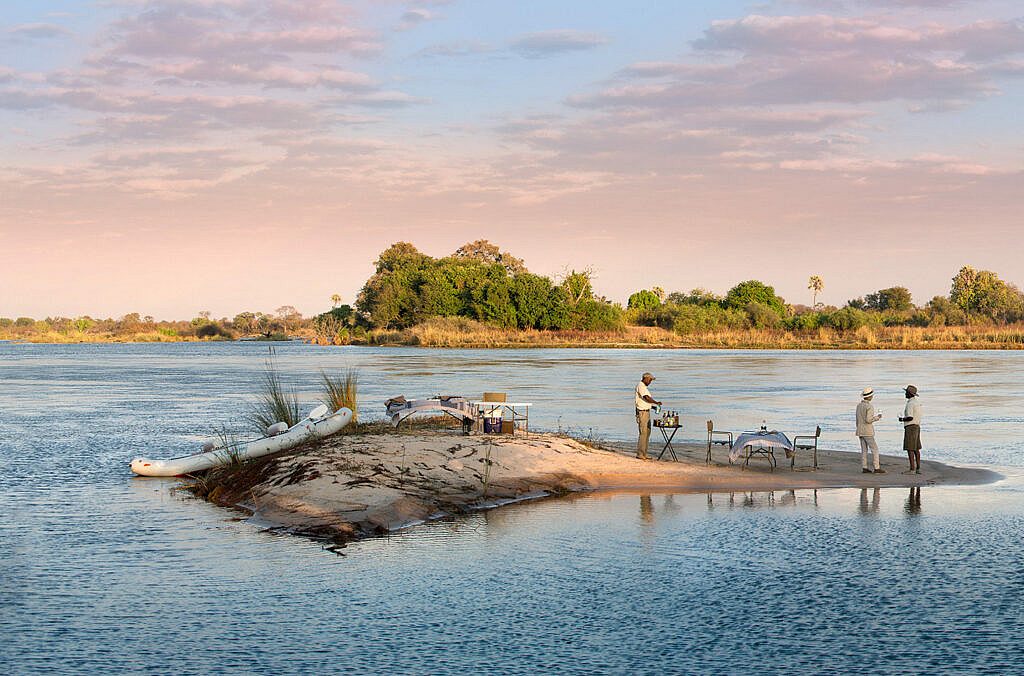Botswana
An Oasis Where Elephants Roam Free
Botswana is known as an eco-friendly haven for wildlife with over 30% of the country preserved in some way. It has a policy of high income, low impact tourism and so is generally a little pricier than neighbouring countries but offers few tourists, wild landscapes and diverse species. A high density of wildlife is sustained by the wet and wild regions of northern Botswana and this is where we have focussed. Get in touch if you would like to visit another region and we can put together a custom itinerary for you!
In Chobe National Park you can marvel at enormous herds of elephants and other wildlife that gather along the broad, glittering expanse of the river and its floodplains in the dry season. Spectacular photographic opportunities abound. Chobe has the world’s highest density of elephant and is also easily combined with nearby Victoria Falls.
The Linyanti River and swamp are north of Savuti in a remote corner of Chobe National Park. It is an unspoiled and beautiful region of waterways, lagoons, riverine forests, ancient trees and palm tree islands. The area is known for great sightings of endangered African wild dog and big cats.
Of course, the jewel in Botswana’s crown is the spectacular Okavango Delta- a vast oasis and one of the world’s only inland deltas. This UNESCO World Heritage Site teems with some of Africa’s largest and most diverse populations of wildlife supported by floodplains, streams and palm-strewn islands. The Khwai Reserve a wildlife-rich 180,000 hectares on the eastern side of the Delta. It offers a great mix of habitats and as such good populations of antelope, giraffe, buffalo, elephant, lion, leopard and African wild dogs as well as the chance to try land and water-based activities.
The dry season runs from May to October. There is very little if any rain over this time and from May to August cool early morning temperatures can be expected although days are still sunny and warm. The weather warms toward September and October peaking at around 40°C just before the rains arrive and rejuvenate the landscape.
Interestingly, the Okavango Delta changes and fluctuates with the seasons and the main floodwater arrives from the Highlands of Angola between March and June, and by June and July, the water levels are at their maximum. This influx of water in a dry period is why the delta is such an oasis of life and game viewing is particularly good from July to October.
The warm, wet season lasts from November to April. December through to March are the wettest months with afternoon downpours almost guaranteed. November and April/May are ‘shoulder season’ months where the weather is less predictable.
Best Time to Travel to Botswana
The dry season months of June to October offer superb game viewing as wildlife migrates to the Northern regions of Botswana in search of water.
In the Okavango Delta water levels are high, so it’s also possible to enjoy a mokoro (dugout canoe) safari and float through the tranquil waterways while looking out for wildlife. In the Linyanti, the Savuti Channel is a magnet for thirsty animals and their accompanying predators. Similarly, the Chobe River is inundated with huge herds of elephant and buffalo.
If you want to visit the drier areas such as the Kalahari we can also arrange that on request and would recommend the wet season months of November to April as this is when the dry landscape springs to life.
Citizens of most countries can obtain a visa upon arrival. Information about visas, fees and application process is available from Botswana’s Department of Immigration. A passport with at least six months of validity remaining is required.




